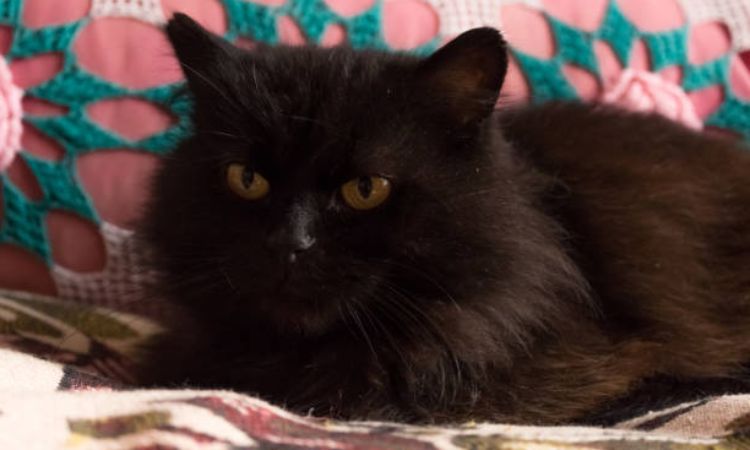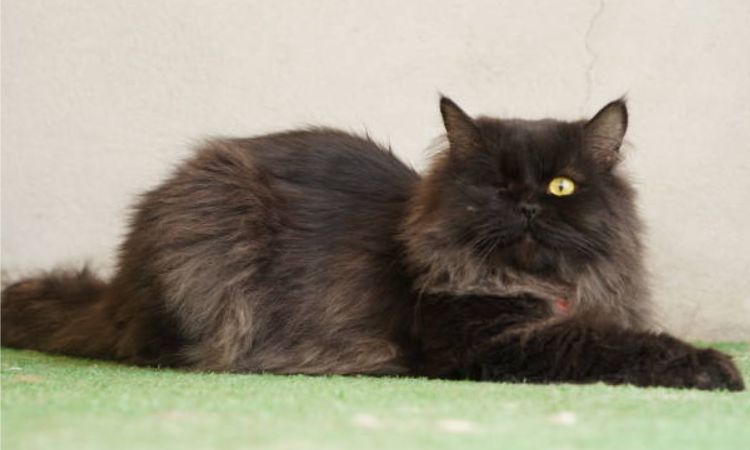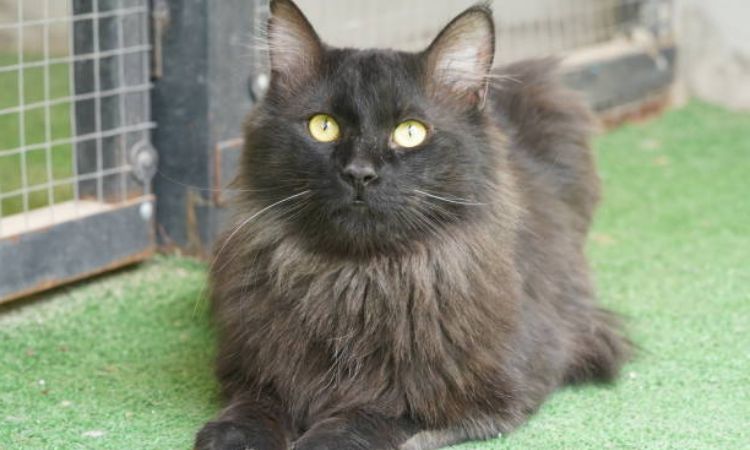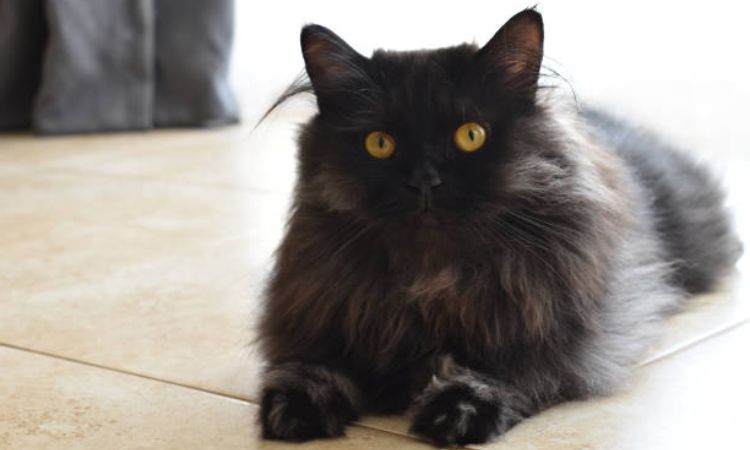You don’t come across a Chantilly-Tiffany by accident. This elusive, silky-coated feline slipped onto the scene in the late 1960s and nearly vanished before most people ever knew it existed. Neither a household name nor a creature of myth, the Chantilly-Tiffany sits in that fascinating space between—it’s real, it’s rare, and it’s wrapped in mystery.
Today with Nexus Pets we’re diving into everything that makes this breed unforgettable: its price, personality, size, and the surprising truth behind why it never actually went extinct.

Chantilly-Tiffany Personality & Temperament
The Chantilly-Tiffany cat is renowned for its affectionate and loyal nature, earning comparisons to a small, furry dog. These cats form exceptionally strong bonds with one or two people, often following their favorite humans from room to room. They thrive on companionship and can become lonely or even depressed if left alone for long stretches, making them ideal for owners who enjoy interactive, consistent pet time.
Despite their deep attachment to their humans, Chantilly-Tiffany cats are generally gentle and sociable. They tend to get along well with children, other cats, and even dogs, though they may initially appear shy or reserved around strangers. Their activity level is moderate—they enjoy interactive play and mental stimulation but are just as content curling up on a soft surface for a nap.
One of the breed’s most distinctive traits is its vocalization. Chantilly-Tiffanys are known for their soft, melodic sounds, including chirps, trills, and peeps, often used to communicate with their favorite humans. They are intelligent, observant, and highly responsive to their environment, making them engaging companions that can express a wide range of emotions and reactions.
Physical Characteristics and Size
1. Size and Weight
The Chantilly-Tiffany is a medium-sized cat with a semi-foreign body type, striking a balance between elegance and sturdiness.
- Weight: Typically ranges from 6 to 12 pounds (2.7–5.5 kg), with males generally heavier than females.
- Body Build: Neither cobby nor overly slender, the body is proportionate and graceful, allowing for moderate agility and playful activity.
- Activity Level: Moderately active; enjoys both playtime and lounging, making them well-suited for indoor living.
2. Coat and Grooming
Chantilly-Tiffany cats are celebrated for their luxurious semi-long coat, which is silky and soft to the touch.
- Coat Type: Single-layered, without a dense undercoat, which makes grooming simpler than other longhaired breeds.
- Shedding: Minimal; less prone to matting compared to traditional longhairs.
- Coat Colors: Originally chocolate, the breed later accepted blue, lilac, cinnamon, and fawn. Solid and tabby patterns such as mackerel, ticked, or spotted were allowed, while colorpoints, classic/blotched tabby, and white markings were not.
- Grooming Needs: Weekly brushing is recommended to maintain coat quality and prevent tangles or loose hair buildup.
- Maturation: The full coat develops slowly, usually reaching its peak texture, length, and color intensity by 1–2 years of age.
3. Distinctive Features
Chantilly-Tiffany cats are easily recognizable for their refined and elegant features:
- Head: Broad, modified wedge with gentle curves and high, wide-set cheekbones. The muzzle is medium-length and softly squared with defined whisker pads.
- Eyes: Almond to slightly oval-shaped, expressive, and set at a slight angle. The eye color ranges from gold to amber/yellow, deepening with age; green eyes were not permitted.
- Tail: Long, full, and plumed, complementing the overall elegance of the breed.
- Neck Ruff & Ear Furnishings: A subtle neck ruff and ear tufts/streamers enhance the breed’s graceful appearance.
- Overall Impression: A medium-sized, semi-foreign cat with a silky, flowing coat, striking eye color, and distinctive plumed tail, embodying elegance and charm in every feature.
Price and Cost of Ownership

1. Chantilly-Tiffany Cat Price Range
Chantilly-Tiffany cats are extremely rare, and finding a registered purebred is challenging. When available, the average price for a kitten ranges from $400 to $600, though prices can be significantly higher depending on breeder reputation, lineage, and coat quality.
Because of their rarity and the fact that the breed has historically faced near-extinction, buyers should exercise caution when encountering breeders claiming to sell Chantilly-Tiffany kittens. There are no widely recognized active breeding programs, and some listings may be scams taking advantage of the breed’s scarcity. Always research breeders thoroughly, verify pedigrees, and consider adoption from rescues or shelters as a safer alternative.
2. Ongoing Costs
Owning a Chantilly-Tiffany cat involves standard cat care expenses, along with additional considerations due to their semi-long coat and social nature:
- Nutrition:
- High-quality cat food is recommended, ideally enriched with omega-3 fatty acids to support skin and coat health.
- Approximate monthly cost: $30–$60, depending on brand and diet type.
- Litter and Bedding:
- Premium clumping litter, litter boxes, and bedding are necessary for comfort and hygiene.
- Estimated monthly cost: $20–$40.
- Routine Veterinary Care:
- Annual wellness exams, vaccinations, and preventive treatments (e.g., flea, tick, and deworming).
- Occasional medical care for unexpected illness.
- Typical yearly cost: $200–$500, varying by location and services.
- Grooming Supplies:
- Although the Chantilly-Tiffany has minimal shedding and no undercoat, weekly brushing is recommended to maintain coat health.
- Supplies may include brushes, combs, and grooming wipes.
- Estimated initial cost: $30–$60; ongoing replacement costs are minimal.
- Additional Considerations:
- Due to the breed’s rarity, acquiring a purebred kitten from a reputable source may be costly and time-intensive.
- Owners should factor in time, effort, and potential travel expenses if seeking a legitimate breeder.
While the initial purchase price for a Chantilly-Tiffany kitten may be moderate ($400–$600), the true cost of ownership includes ongoing expenses such as food, litter, veterinary care, and grooming. Given the breed’s rarity, prospective owners must approach purchasing with caution, prioritize ethical breeders, and be prepared to invest in the cat’s health, well-being, and happiness over its lifetime.
Rarity, History, and Why It’s Not Extinct (The “Rare Breed” Story)
1. Origins and Early History
The Chantilly-Tiffany cat, often called simply the Chantilly cat, originated in New York in the late 1960s. Its story begins in 1967 with two long-haired, chocolate-colored cats with striking yellow eyes—Thomas and Shirley—of unknown ancestry. These cats were discovered by breeder Jennie Robinson and became the foundation of a small, unusual lineage. Initially, the breed was registered under the uninspiring name “Foreign Longhair”, but Robinson and later breeders sought a more appealing identity. By the 1970s, the breed had been renamed “Tiffany”, reflecting its elegance and rarity.

2. Confusion and Name Changes
Over time, the breed’s identity became muddled. The name Tiffany was sometimes confused with the British Tiffanie, an entirely different Asian Longhair/Burmilla cross, leading to further classification challenges. In the early 1990s, Canadian breeders working to preserve the chocolate-colored lineage decided to adopt the name “Chantilly Tiffany” to distinguish it from unrelated breeds. This designation stuck, though confusion still arises occasionally in casual references, and the breed is still sometimes simply called Chantilly.
3. The Rarity and “Near-Extinction” Status
Chantilly-Tiffany cats have always been extremely rare, facing near-extinction multiple times. Challenges included low breeding numbers, the loss of registry recognition, and natural disasters such as the 2012 fire at the Amorino Cattery, which destroyed the last known American breeding records. By the mid-2010s, very few cats with confirmed lineage remained, and attempts to preserve the breed through crossbreeding were limited.
Despite this precarious history, the breed is not completely extinct. While pedigreed Chantilly-Tiffanys are incredibly rare and not recognized by major registries, the distinctive chocolate coat, silky fur, expressive eyes, and affectionate personality occasionally reappear in non-pedigreed or mixed-breed cats. Additionally, a handful of dedicated breeders in North America and Europe have made efforts to maintain the breed’s genetic line, keeping the legacy of this “rare breed” alive for enthusiasts and future generations.
Health and Care Tips
Lifespan
Tiffanie cats generally have a lifespan of 7 to 12 years, although with excellent care and attention to health, some individuals may live longer. Genetics, diet, and overall lifestyle all play a role in their longevity.
Common Health Considerations
- Overall Health: Tiffanies are considered inherently healthy and robust compared to many other long-haired breeds.
- Digestive Sensitivity: Some cats may have sensitive stomachs or finicky eating habits, requiring a diet of high-quality, easily digestible animal proteins.
- Hair-Pulling / Over-Grooming: Certain individuals may develop a habit of hair-pulling or over-grooming, often linked to stress, anxiety, or boredom. Providing environmental enrichment and companionship can help reduce this behavior.
- Other Potential Concerns: Routine monitoring is recommended to prevent respiratory issues, dental problems, or minor skin irritations, which are occasional but possible.

Care Summary
- Grooming: Brush their long, silky coat 2–3 times per week to prevent tangles, mats, and excessive shedding. Regular brushing also stimulates circulation and strengthens the bond between you and your cat.
- Dental Hygiene: Brush teeth a few times per week using a pet-safe toothbrush and cat-friendly toothpaste to reduce the risk of periodontal disease.
- Nail Care: Trim nails every few weeks using proper cat nail trimmers. If you’re unsure, a veterinarian or professional groomer can assist.
- Diet: Feed a high-quality diet rich in animal protein, with measured portions to prevent obesity. Encourage play and exercise to maintain a healthy weight.
- Companionship: Tiffanies thrive on consistent human interaction. They can develop separation anxiety if left alone for extended periods, so consider a feline companion or interactive enrichment toys if you’re away frequently.
- Veterinary Care: Schedule annual check-ups even if your cat appears healthy. Bring up any unusual behavior, changes in appetite, or signs of illness promptly.
The Chantilly-Tiffany cat is a truly unique breed, cherished for its striking chocolate coat, affectionate personality, and medium-sized, elegant build. While pedigreed individuals are rare, their charm and distinctive traits continue to capture the hearts of cat lovers. For those seeking a devoted, communicative, and playful companion, the Chantilly-Tiffany remains a breed worth knowing—even if finding one requires patience and careful research.






